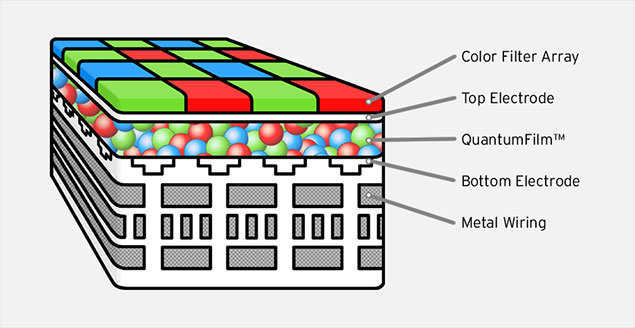QuantumFilm is a photosensitive layer that relies on InVisage’s newly invented class of materials to absorb light; specifically, the new material is made up of quantum dots, nanoparticles so small that, once they are synthesized, they can be dispersed to form a grid. Just like paint, this dispersion of solid materials can be coated onto a substrate and allowed to dry.
The unprecedented light sensitivity and customizability of QuantumFilm set InVisage’s image sensor apart from traditional CMOS image sensors. Conventional sensors rely on a photosensitive layer made of silicon that also incorporates the circuitry necessary to read the electric output from the detected photons, as well as barriers isolating each pixel in order to prevent crosstalk. This means both less room for light sensing and less room for electric storage. Invisage has designed an innovative image sensor architecture with a dedicated QuantumFilm layer in order to maximize light sensing capability.
The above drawing shows a cross section of QuantumFilm pixels. Light passes through the color filter array, to be detected by the quantum dots in the QuantumFilm layer. The metal wiring made of silicon is the sensor’s electrical circuitry. The higher positioning of the photosensitive layer allows the QuantumFilm pixel to detect more photons, store more electrons, and reproduce colors more accurately—all with a thinner camera module.

